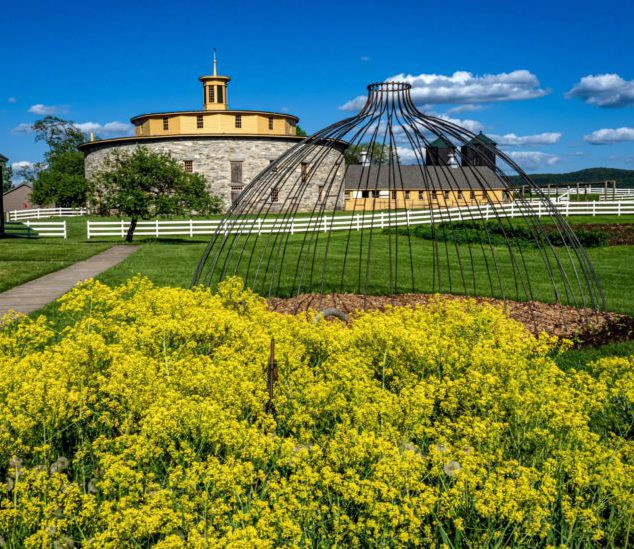
Pinaree Sanpitak at Hancock Shaker Village’s first major exhibit of contemporary Asian art
3 Jun 2022
Each year, Hancock Shaker Village invites artists to create new works that responds to this historic site as a means of seeing the Shakers through a new lens. A Spirit of Gift, A Place of Sharing features three artists—Yusuke Asai of Japan, Kimsooja of South Korea, and Pinaree Sanpitak of Thailand—who connect the forms rooted in various Asian sensibilities and aesthetics with the simplicity and spirituality emanating from everything the Shakers made. Like the Shakers, these contemporary artists share an intense concentration of minds, handcrafted intimacy, and unique use of space with their visual language.
Over the course of the past year, the artists were invited to respond to the natural and architectural setting of the village, the museum’s collection of Shaker material culture, and the work of the people who diligently care for and activate our historic property, including the blacksmith, farmer, gardener, and chef. Considering key qualities of Shaker living, philosophy, and spiritualism, the artists then made site-specific or site-responsive works, with new commissions from each.
Sanpitak’s bucolic sculptures in varying scales are placed throughout the heart of Hancock’s Shaker kitchen and surrounding gardens. In conjunction with her site specific works, Sanpitak has collaborated with the Village’s chef Josh Kelly on a project titled, Hancock Breast Stupa Cookery, where they will incorporate both Berkshire and Thai herbs and vegetables grown on the trellis-like structures. Feasting as a community is the most fundamental activity across cultures, and through her farm-to-table project, food bridges contemporary arts and the everyday life.
Sanpitak finds her ideal in the utopian society of the Shakers, where women are held at equal social standing to men more than two centuries ago. Her works are most often understood in relation to Buddhist spiritual traditions, informed by deep contemplation of the unity between the mind and body. Her most evocative motif is in the form of breast, known as stupas, and are sacred hemispherical structures originally intended to contain Buddha’s relics and were used as a place of meditation. The sculptures made of torn mulberry paper are intermingled with the Shaker’s utensils, symbolizing propagating nourishment throughout the intimate space where women prepared the meals that fed their communities for centuries. Emulating the spirit of the Shakers—simple, joyous, nurturing, sustaining one another through land, work, and community, Sanpitak’s artistic practice is a contemporary model of sustenance that extends naturally to the land.
Image: installation view of Pinaree Santipak, Breast Stupa Topiary, located at one of the gardens of Hancock Shaker Village on view until 14 November 2022.